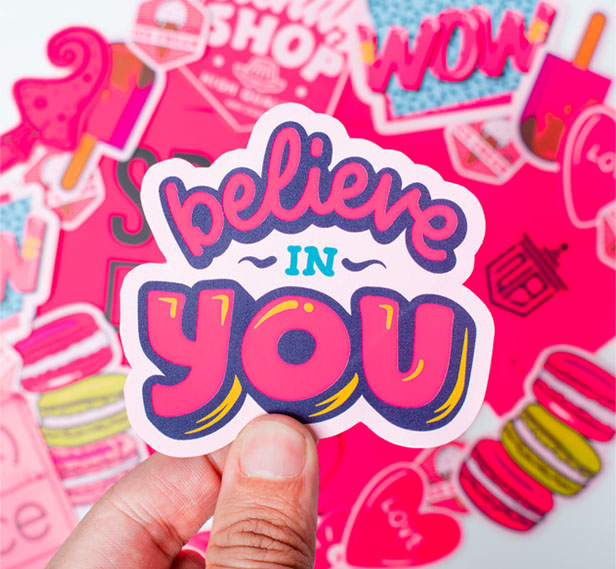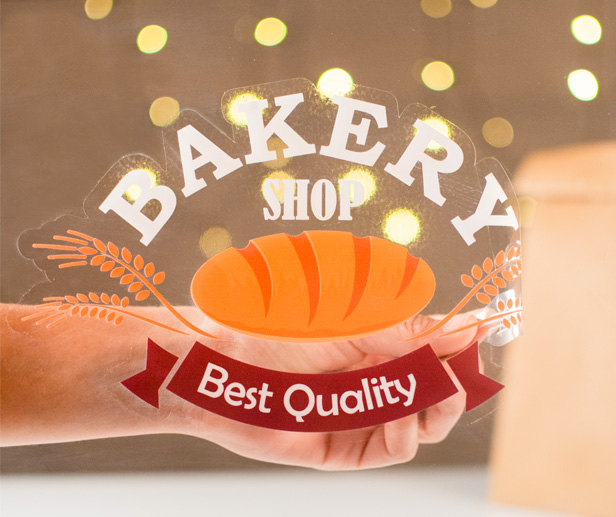Product Hub November 07, 2023
Top Tips for Goof-Proof Sticker Orders
Interested in stickers? Make sure you get exactly what you want by using this handy guide.
Stickers have long been an inexpensive, high-exposure way to get a brand name out there. We see stickers everywhere, including on laptops, lockers, coolers, drinkware, notebooks, guitar cases and the rear windows of cars.

Randy Carr, CEO of World Emblem (asi/98264)
In addition to branding, a sticker can be informational or highlight a product benefit such as being eco-friendly, gluten-free, handmade, locally made, etc. Roll labels also can serve as tamper-evident food-packaging seals.
Stickers are versatile in that they can be applied to a wide range of surfaces, including wood, glass, metal and plastic. They make it easy to turn almost anything into a promotional product without the commitment of having something custom printed.
An attention-grabbing sticker has great visibility that can last for years depending on where and what it’s adhered to. If you’re new to ordering stickers, use this guide to help make the process smooth and error-free.
Know Your Sticker Styles

Bright fluorescent stickers can make a product stand out from the competitors’. (Courtesy of Stickers International)
Each type has strengths and limitations in terms of durability, adhesion, weather-resistance and cost. Choose the type that suits your purpose and environment.
Sticker types vary by supplier, but in general, most companies offer matte, glossy and clear in heavy-duty vinyl. Specialty stickers include domed, metallic, glow in the dark, reflective and fluorescent. There also are removeable stickers, which are made with white glossy vinyl; they’re waterproof and removeable for up to six months after application.

Window clings are printed on clear vinyl and adhere to glass using static electricity. They easily stick by applying pressure and can be removed by picking up an edge. (Courtesy of Stickers International)
Window clings are also considered to be in the sticker category. These are printed on clear vinyl, and they don’t have an adhesive – they adhere via static electricity. They are great for windows or anything made of clear glass. They easily adhere by applying pressure and are quickly removed by grabbing an edge.
For the most part, pressure-sensitive stickers will adhere to any smooth, flat, dry surface. Examples include books, boxes, packaging, plastic and glass bottles and beverage containers, and paper. They won’t stick well to a surface with a coating like oil or dirt, or to a textured surface.
The Shape of Stickers To Come
When deciding on a shape, one of the biggest determiners will be what you’re using it for. Many suppliers offer the most popular stock shapes: square, rectangle, circle, oval, diamond, and stadium, which is a rectangle with rounded corners.
If stock shapes don’t meet your needs, you can opt for a custom shape. These are either die-cut, meaning they’re cut through the sticker itself and its carrier sheet, or kiss-cut, meaning only the sticker material is cut so you must peel it off for application.

Stickers come on rolls or sheets. Rolls are more cost-effective than sheets and can be applied using a label applicator, making it less labor intensive. (Courtesy of Stickers International)
If you’re giving away individual stickers, then you need die-cut. If you’re applying stickers yourself to a product, kiss-cut sheets or rolls are what you want.
For kiss-cut stickers, you’ll find they’re available on sheets and rolls. Not every type will be available on both, so be sure to check which type is needed. Rolls are more cost-effective than sheets, so for larger quantities, rolls are a better choice. Rolls also can be applied using a label applicator machine, which is faster, requires less labor and offers greater consistency of placement.
Avoid These Common Mistakes
• Proof the text and the size when ordering your stickers. When you receive an order for approval via email, print it out and make sure there are no typos, it’s legible and that the size is what you intended.
• If you want a sticker with a clear background, don’t submit the design on a white background. Otherwise, it can be difficult to determine which parts of the design should be clear.
• Be careful that the design doesn’t extend out too close to the sticker’s edge. If you’re using an online sticker design tool, which is offered by some suppliers, you’ll see a line designating the print area.
• One of the most common mistakes is uploading a design with low resolution. For a sharp, crisp graphic, be sure the resolution is at least 300 dpi at the finished size of the sticker.
Stickers come in a range of sizes depending on the manufacturer and intended use. However, the minimum and maximum sizes for stickers generally depend on the specific production capabilities of the manufacturer.
A popular size range starts at ½ inch by ½ inch and goes up to 8.81 x 8.64 inches. If you need something outside that range, check with manufacturers to confirm options.
The minimum order will vary by supplier. As a rule of thumb, most manufacturers will have a minimum of one sheet. The size of the sheet may vary and how many stickers fit on that sheet will depend on the size of the design.
Stickers are an easy, effective way to promote your brand. Because of their versatility and ease of use, there are endless ways they can be employed to increase your exposure and sales. Consider how you might add stickers to your next promotion or campaign for greater results.
Randy Carr is the CEO of Top 40 supplier World Emblem (asi/98264), a global supplier of emblems and patches. The Hollywood, FL-based company, founded by Carr’s father in 1993, has multiple manufacturing facilities in the United States, as well as one in Mexico and one in Canada. With 2022 North American promotional products revenue of $90 million, the firm ranked 21st on Counselor’s latest list of top suppliers.

Product Hub
Find the latest in quality products, must-know trends and fresh ideas for upcoming end-buyer campaigns.
